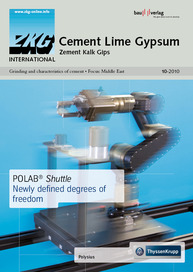Expanding business activities in Africa
HeidelbergCement has signed an agreement with George Forrest in order to expand the cement production capacity in the Democratic Republic of the Congo (DRC). The newly agreed shareholder structure will give HeidelbergCement a majority position in Forrest Group’s cement activities in DRC. HeidelbergCement will hold majority stakes of 55 % in the Cimenterie de Lukala (CILU) cement plant, located close to the capital city of Kinshasa, and of 70 % in the two Interlacs plants, located in the eastern part of the country. Total cement capacity of all plants amounts to more than 500 000 tonnes per year and will be expanded to over 1.4 million tonnes. In the new partnership, Forrest Group retains a 30 % position in the plants.

